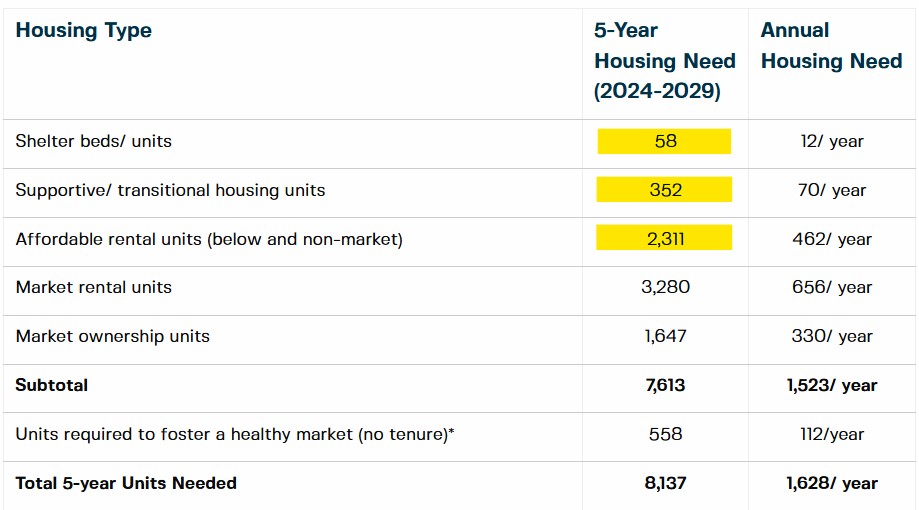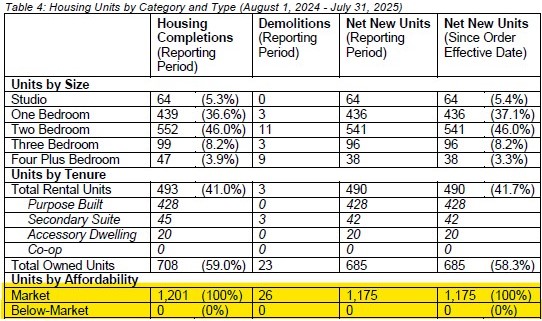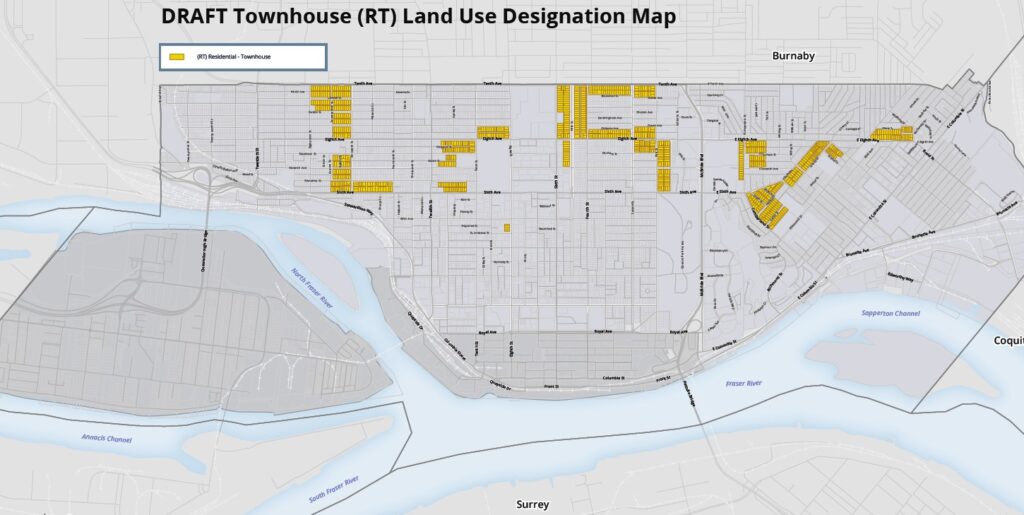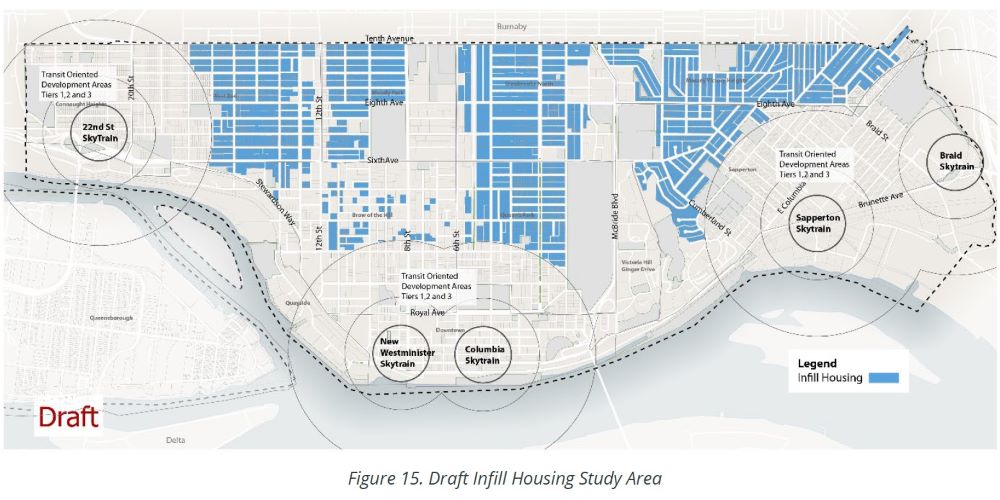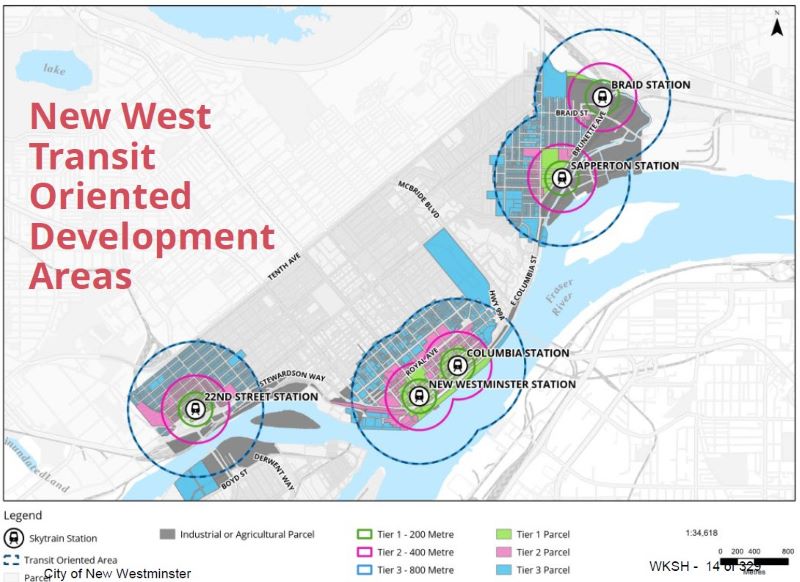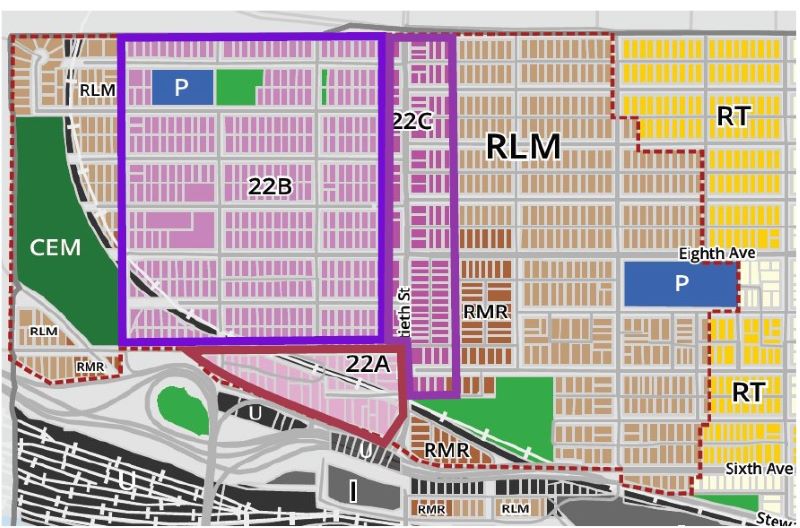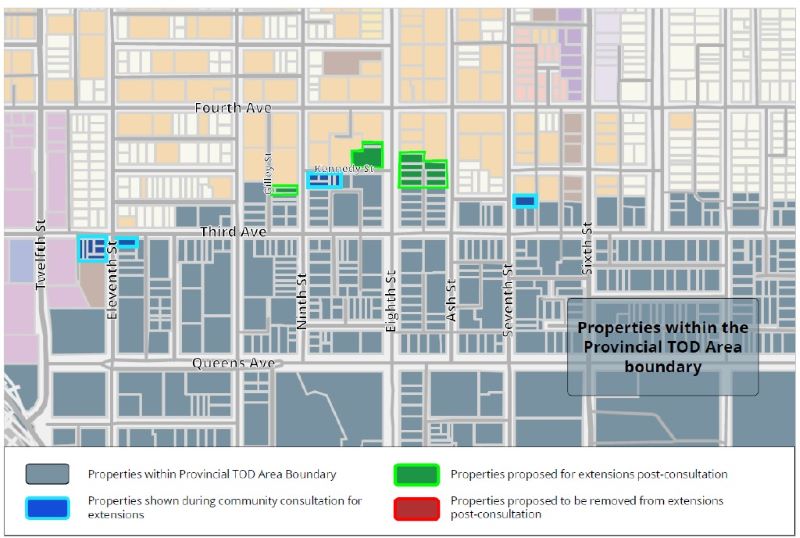Our Council meeting on Monday had a Back-to-School feel after our short summer break. The late august meeting always is a strange one, feels more like getting a few things out of the way before the real works starts in earnest in September, but we actually had a lengthy agenda and lots of good discussion on important issues, so I’m going to split this reporting out into two posts. It all started with a Presentation:
Building Safer Communities Fund Program – At-Risk Youth Update
The Federal Government provided the City a grant through the Building Safer Communities Fund to work with local non-profits and youth to develop a Youth Resilience Strategy, and over the last almost two years staff and partners in the community have been working to make this happen through the New Westminster Youth Hub, Dan’s Diner, the New Westminster Situation Table and preventative programming for middle schools across the City.
There was some good news coming out of this work – youth involvement in crime and gang activity is lower than pre-COVID levels, there are a lot of youth at risk getting support at the key time when they need it, and the better coordination between service providers means fewer cracks for youth to fall though. This report provides a lot of statistics about the number of youth served and the measurable success of this suite of programs.
We now need to move this momentum into a sustainability model – and yeah, that means funding beyond the $1.7 Million offered by the federal government and approved by Council in 2023. We will start now hitting senior governments for the ~$600K/ year in sustainability funding, and worst case scenario, look at City providing some funding in the 2027 budget.
We then had a few items of Unfinished Business after the last meeting in July unexpectedly ended early:
Supporting Longstanding Civic Non-Profits through Prioritized and Multi-Year Funding
Submitted by Councillor Minhas
WHEREAS non-profit organizations such as those behind the May Day celebrations and the Hyack Parade have been delivering signature community events in New Westminster for over 50 years, contributing significantly to the city’s cultural identity, civic pride, and tourism economy; and
WHEREAS over the past decade, funding for these legacy events has been dramatically reduced, including a decrease in annual City support for the Hyack Festival Association from $150,000 to just $15,000 per year; and
WHEREAS these long-standing non-profits are now forced to compete for limited grant funding against newly formed organizations, creating barriers to sustainability and threatening the continuity of historic civic traditions;
THEREFORE BE IT RESOLVED THAT the City of New Westminster direct the Grants Review Committee to prioritize funding for long established non-profit organizations that have demonstrated sustained contributions to civic life and cultural heritage over several decades;
BE IT FURTHER RESOLVED THAT the Committee explore the implementation of multi-year funding agreements, for up to three years, to support the financial stability and long-term planning of eligible legacy organizations.
I amended this item to add the following two clauses:
THAT staff be instructed to include a 50% increase in the Community Grant funding envelope for 2026 as part of the 2026 Budget deliberations; and
THAT the City continue to actively advocate to the Minister of Tourism, Arts, Culture and Sport to increase the B.C. Fairs, Festivals and Events Fund and also advocate to the Minister of Jobs, Economic Development and Innovation to provide increased support to local festival organizations, including arts and business improvement organizations who activate our communities, support cultural exchange and connection, and boost small business prosperity through festivals, fairs and events.
This was a bit of a divisive conversation last meeting, but Council had ( I think) a much better discussion of relative values this meeting. My main emphasis was that over my decade on Council, we have made a conscious shift to get the politics of favoritism out of community grant awards. We have created a system where grant criteria are approved by Council and are then provided to applicants through staff. We then have volunteer members of the community work with staff to review applications and determine how best allocate the funds. As much as possible, we have tried to take Council’s finger off the scale, because successive Councils have felt it was perilous for elected folks to play favorites with different groups in the community through funding, and I stand by that principle.
Directly to the first “be it resolved”: I think what an organization delivers to the community is a more important criteria than how long they have been around. The Hyack Festival Association has done great work for this community, the Hyack parade was great this year, a tonne of people loved the fireworks last weekend, and those volunteers and staff work hard to deliver great events. But so did the Dia de Campo folks who are relatively new grant applicants, delivering something new and exciting to the City, and they should not (in my opinion) have to wait 50 years to get equal access to funding.
And it’s not just me who thinks this. Council did a review of the Community Grant Program last year (it was reported to Council on July 8, 2024 if you want to read the report). This included a community survey, focus groups with grant recipients, an Arts Culture and Economic Development committee review, and more than 600 people in the community taking part in the consultation. The first recommendation was and I quote “evaluate grant applications using a values-based matrix, rather than Council priorities, to remove any potential political component”. Further, the results of that public engagement specifically said the City should continue to provide balanced support for established and emerging organizations. Only 9% of the public felt we should prioritize longstanding organizations through this mechanism. The question was asked, and this motion appears to be diametrically opposed to how the community wants us to allocate grant funds. For these reasons, I could not support that part of the motion.
On the Second “be it resolved”: the City grants program already has a multi-year grant process, with many organizations already applying for three-year terms, others choosing only one year grants, the resolution is moot as the three year grant option already exists, and the program is actually expanding to permit five year terms starting this year.
I added the amendments because in discussing this issue with staff and applicants, I found the issue is that our grant program is over-allocated. Though we have slowly increased our grant amounts over the last decade and are now over $1 Million a year, we had only enough in the budget to support 55% of the requests received. So when a valued community organization doing great work like Hyack received 90% of their requested funding from a program that is only only 55% funded – isn’t about political bias, it’s about an underfunded grant envelope relative to what we expect organizations in our community to deliver. This is why my amendment would ask Council, as part of budget deliberations for 2026, have an option that increases this funding envelope by 50%. And we should take this opportunity to remind senior governments that this is a great investment in community, and they might be able to help us.
In the end, Council did not support the two original clauses, but supported the amendment clauses unanimously.
Review of City’s Speed Hump Installation Policy
Submitted by Councillor Fontaine
WHEREAS the City of New Westminster’s current speed hump policy primarily relies on resident-initiated requests, which may unintentionally favour areas with greater resources or civic engagement capacity;
WHEREAS traffic calming measures, including speed humps, are an important tool for improving road safety and livability—especially near schools, parks, and in high-pedestrian areas;
WHEREAS a more equitable and standardized approach to the installation and design of speed humps would ensure consistency, fairness, and prioritization based on need and data;
THEREFORE BE IT RESOLVED THAT Council direct staff to undertake a review of the City’s Speed Hump Installation Policy, with a focus on improving equity in access, standardizing implementation practices, and incorporating data-driven criteria for identifying priority locations, and
report back with findings and recommendations.
The City has a Speed Hump policy that is about 5 year old now. When it was established, it represented regional best practice, and the description in this motion describes exactly how the program was designed: to assure equity in access, standardize the decision making, and be data-driven in prioritizing locations. So we don’t need an all-new program, our existing program meets these criteria the best we know how. That said, any program like this that was rather innovative when we launched it and has been operating for 5 years can benefit from a review to see if we are meeting our established criteria, so I support this motion, as did all of Council.
We then did our regular Consent Agenda work, which I will report on next post, so I can skip down to the end of the meeting when we considered a few new Motions form Council:
Ukrainian Sister City Proposal
Submitted by Mayor Johnstone
WHEREAS New Westminster has previously identified Moriguchi, Japan (1963) Quezon City, Philippines (1991) Lijiang, China (2002) and the six communities of the Tŝilhqot’in Nation (2020) as Sister Cities; and
WHEREAS New Westminster has both deep historic ties to the Ukrainian community and a growing population of more recent arrivals from Ukraine, centered around the Holy Eucharist Cathedral and a burgeoning local Ukrainian business community; and
WHEREAS Canada has been resolute with our NATO allies in supporting Ukraine and the Ukrainian people in the face of illegal occupation and horrific destruction wrought by the deadliest war in Europe since WW2; and
WHEREAS since 2022 communities across Canada have sought twinning agreements with communities in Ukraine to show support for the Ukrainian people, and as a means to stronger cooperation between communities to the benefit of both nations;
BE IT RESOLVED that New Westminster work with the local Ukrainian community to identify an appropriate partnership city in Ukraine with whom to develop a Sister City relationship.
This motion, I think speaks for itself. It arose from discussions I had with Rev. Ozorovych at Holy Eucharist Cathedral after a meeting with him and (then-) Member of Parliament Peter Julian. The Reverend spoke about the experiences of many Ukrainian people who are finding refuge in Canada because of the illegal occupation by Russia, and the thousands who are finding home and community connection in New Westminster. We discussed how the City can help folks here feel more welcome and supported, and how we can support them as they try to support their loved ones and friends back in Ukraine. When Rev. Ozorovych mentioned Ukraine’s interest in developing Sister City ties to help forge connections, cultural sharing, and pathways to support, I recognized that the City of New Westminster does not yet have a Sister City relationship with a European city, and I suggested that I would take this idea to Council hoping that the rest of Council would agree this would be beneficial.
The government of the Ukraine has a process they have developed to connect Cities there with appropriate Canadian counterparts, and now that Council has approved this motion, city staff can work with Father Ozorovych to identify a candidate City in Ukraine, and we could draft a formal agreement to be approved by Council at the appropriate time.
London Street Active Transportation Route
Submitted by Councillor Campbell and Councillor Henderson
WHEREAS the City is considering improving parts of the London Street Active Transportation Route and in addition to these options, other active transportation improvements are being proposed along the London Street route.
WHEREAS input will be reviewed following the community engagement and will be used to adjust and refine the proposed improvements along the London Street Route and final designs are expected to be completed in the fall, and construction of the new active transportation route is expected to begin in winter 2025.
BE IT RESOLVED THAT staff report back to City Council with London Street Route public engagement results prior to tendering any work.
We had another delegation from folks on London Street irritated by plans to make the London Street Greenway safer for all users. The London Street section of the ongoing Active Transportation Network Plan was planned for some upgrades this year, and through the public consultation we have heard back from an activist group in the neighbourhood who don’t want to lose their free street parking and have some other concerns about how the changes would impact circulation and traffic patterns in the West End. This is why we do public consultation (more on that below) and like many of the other projects in the ATNP, staff put out some draft designs and expected to iterate the design based on feedback prior to building. There usually isn’t a role for Council in that iteration (the Network Plan is approved and is Council policy, this is staff operationalizing that policy). However, as this particular section has garnered an unusual amount of feedback, Council is asking that staff check in to Council with the results of the public consultation prior to tendering any work. Council (even those who oppose bike lanes) agreed unanimously to this approach.
Listening to Residents and Temporarily Halting the London Street Bike Lane Capital Improvements
Submitted by Councillor Minhas
WHEREAS the residents of the West End have started a petition and have asked this Mayor and Council to reconsider the decision made by a previous Mayor and Council in 2022 to implement significant enhancements to the bike lane on London St; and
WHEREAS over 100 residents attending a regular meeting of Council on June 23rd to voice their concern regarding what they perceive to be a severe lack of consultation and communication regarding the London St bike lane project; and
WHEREAS the two options put forward for consideration regarding the London St bike lane project do not necessarily reflect the desired outcomes for a significant number of West End residents;
BE IT RESOLVED that Council direct staff to temporarily pause the London Street bike lane improvement project until an enhanced communications and community consultation plan can be developed and implemented; and
BE IT FURTHER RESOLVED that the public survey be reopened for at least another 60 days with the addition of a “none of the above” option for residents to express their dislike of either option should they wish to do so; and
BE IT FURTHER RESOLVED that it become city policy moving forward that all public surveys, where practicable, include a ‘none of the above’ option to allow residents to express their desire to not support any of the options put forward for consideration.
Yes, a second motion on the same topic. My understanding is that staff and Councillors Campbell and Henderson attempted to set up a meeting to amalgamate these into a single motion, but that effort was to no avail.
The first part here is somewhat redundant after Councillor Henderson’s motion, except that it requests a new round of consultation, which at this point I cannot imagine would garner any different results. It is safe to say after months of consultation (and a preliminary extension of consultation earlier in the year) and several delegations to Council that the opponents of any change on London Street have been heard, and the commitment to bring this back to Council with a reporting out on the public engagement so far gives Council the ability to decide next steps when the information is available to them. As this motion was “severed” (each clause was voted upon separately), this first clause was not supported by Council, nor was the one asking for yet another round of consultation, at least until Council has an opportunity to hear the results of this round.
The third clause led to some interesting discussion and but for the presence of the weasel words “when practicable”, I was not keen to support it. For clarity, our Public Consultation teams already include the do-nothing option when it is appropriate. If we are doing public consultation about something “nice to have” like closing roads to hold a Canucks viewing party, then staff include that option – “is this something the City should do?”. The same question is disingenuous when talking about things the City needs to do, like sewer separation and upgrades, adding green infrastructure to new drainage projects, or important road safety upgrades. Even projects like our Urban Reforestation program, the 22nd Street visioning project, or the Massey Theatre upgrades (as three recent examples from Be Heard New West) where there is significant senior government funding and/or the project is aligned with City policies, long-term plans, or commitments that Council has already made to the public, engagement can be helpful in developing program details or how to prioritize different parts of the work, but it is disingenuous to ask “none of the above” when the City is already committed to and vested in the work.
In the end, Council supported this last clause, with an emphasis on the “when practicable”, as it is fairly well aligned with our current practice.
That’s long enough for now. I will follow up with a post about the rest of the agenda in the next couple of days.

